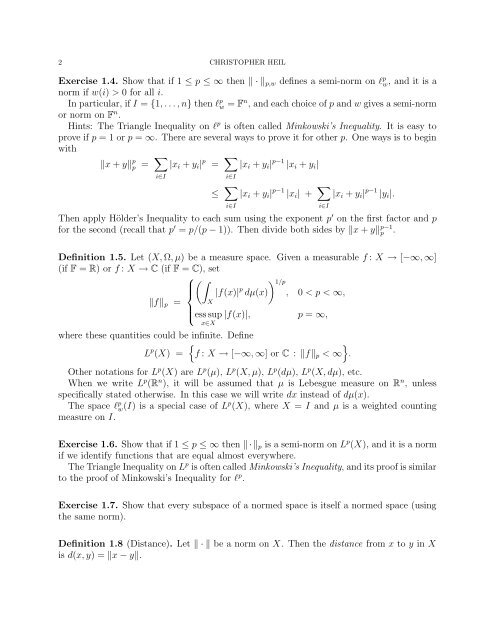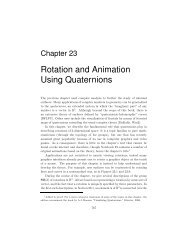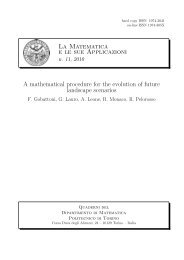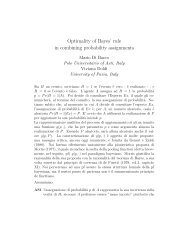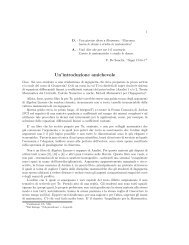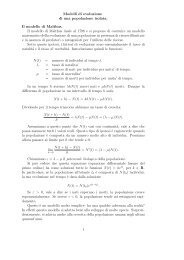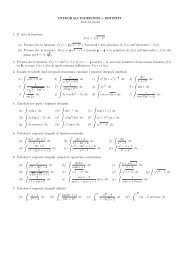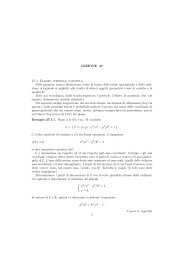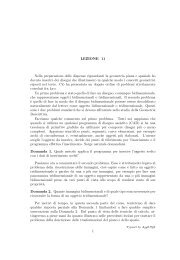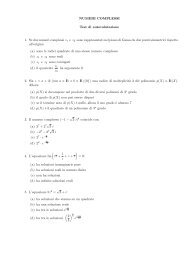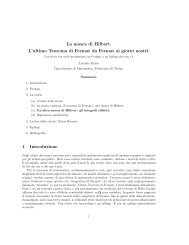FUNCTIONAL ANALYSIS LECTURE NOTES CHAPTER 3. BANACH ...
FUNCTIONAL ANALYSIS LECTURE NOTES CHAPTER 3. BANACH ...
FUNCTIONAL ANALYSIS LECTURE NOTES CHAPTER 3. BANACH ...
You also want an ePaper? Increase the reach of your titles
YUMPU automatically turns print PDFs into web optimized ePapers that Google loves.
2 CHRISTOPHER HEIL<br />
Exercise 1.4. Show that if 1 ≤ p ≤ ∞ then · p,w defines a semi-norm on ℓp w, and it is a<br />
norm if w(i) > 0 for all i.<br />
In particular, if I = {1, . . . , n} then ℓp w = Fn , and each choice of p and w gives a semi-norm<br />
or norm on Fn .<br />
Hints: The Triangle Inequality on ℓp is often called Minkowski’s Inequality. It is easy to<br />
prove if p = 1 or p = ∞. There are several ways to prove it for other p. One ways is to begin<br />
with<br />
<br />
= |xi + yi| p = <br />
|xi + yi| p−1 |xi + yi|<br />
x + y p p<br />
i∈I<br />
i∈I<br />
≤ <br />
|xi + yi| p−1 |xi| + <br />
|xi + yi| p−1 |yi|.<br />
i∈I<br />
Then apply Hölder’s Inequality to each sum using the exponent p ′ on the first factor and p<br />
for the second (recall that p ′ = p/(p − 1)). Then divide both sides by x + y p−1<br />
p .<br />
Definition 1.5. Let (X, Ω, µ) be a measure space. Given a measurable f : X → [−∞, ∞]<br />
(if F = R) or f : X → C (if F = C), set<br />
⎧<br />
⎪⎨ |f(x)|<br />
fp = X<br />
⎪⎩<br />
p 1/p dµ(x) , 0 < p < ∞,<br />
ess sup |f(x)|,<br />
x∈X<br />
p = ∞,<br />
where these quantities could be infinite. Define<br />
L p <br />
<br />
(X) = f : X → [−∞, ∞] or C : fp < ∞ .<br />
Other notations for L p (X) are L p (µ), L p (X, µ), L p (dµ), L p (X, dµ), etc.<br />
When we write L p (R n ), it will be assumed that µ is Lebesgue measure on R n , unless<br />
specifically stated otherwise. In this case we will write dx instead of dµ(x).<br />
The space ℓ p w (I) is a special case of Lp (X), where X = I and µ is a weighted counting<br />
measure on I.<br />
Exercise 1.6. Show that if 1 ≤ p ≤ ∞ then · p is a semi-norm on L p (X), and it is a norm<br />
if we identify functions that are equal almost everywhere.<br />
The Triangle Inequality on L p is often called Minkowski’s Inequality, and its proof is similar<br />
to the proof of Minkowski’s Inequality for ℓ p .<br />
Exercise 1.7. Show that every subspace of a normed space is itself a normed space (using<br />
the same norm).<br />
Definition 1.8 (Distance). Let · be a norm on X. Then the distance from x to y in X<br />
is d(x, y) = x − y.<br />
i∈I


